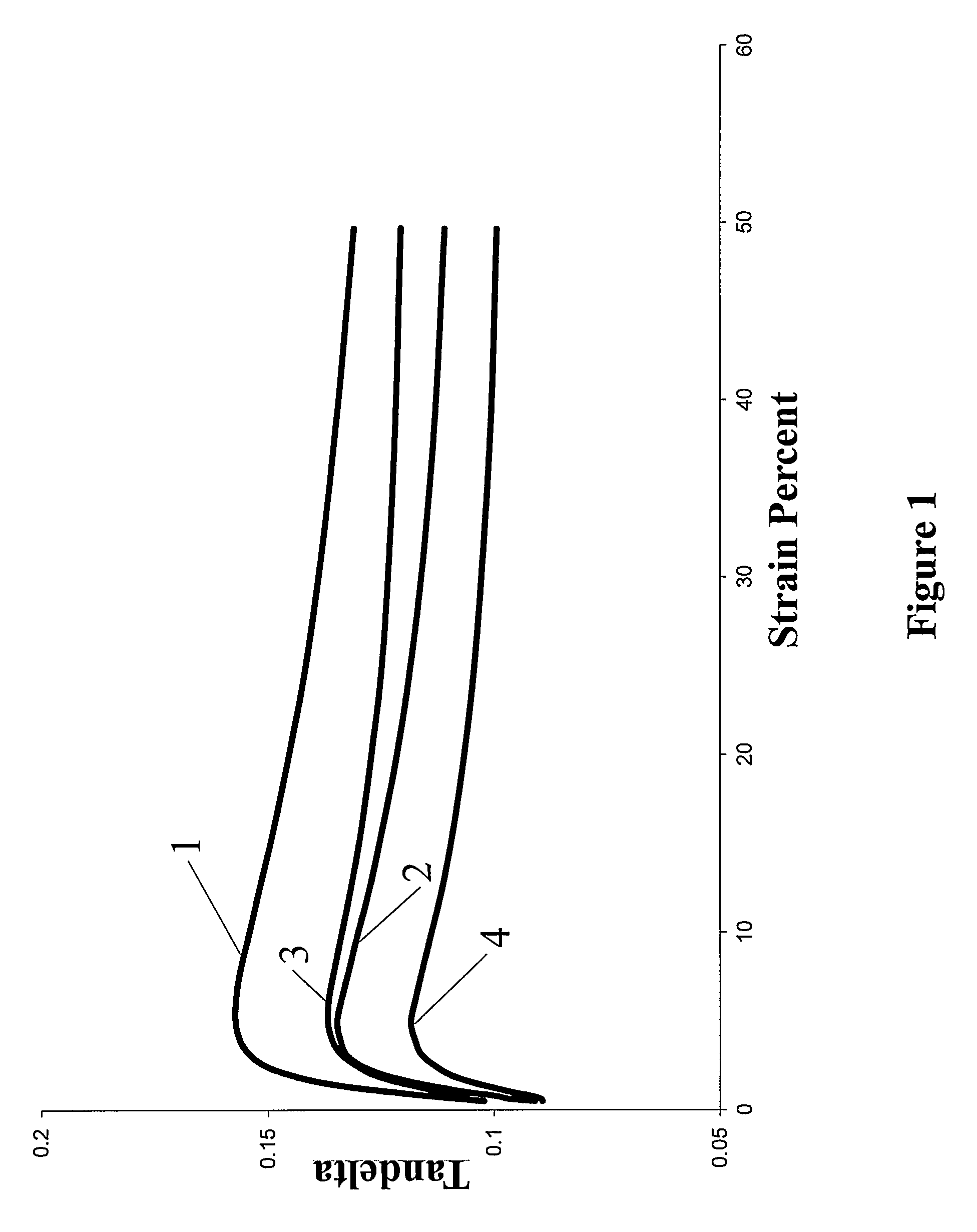Rubber composition and pneumatic tire
a technology of rubber composition and pneumatic tires, applied in the direction of road transportation emission reduction, rolling resistance optimization, etc., can solve the problems of providing a lower level of tire rolling resistance and low polymer hysteresis, so as to improve the affinity of fillers, improve the interaction of polymer/filler, and improve the effect of polymer hysteresis
- Summary
- Abstract
- Description
- Claims
- Application Information
AI Technical Summary
Benefits of technology
Problems solved by technology
Method used
Image
Examples
example 1
[0078]In this example, pilot scale polymerization of a non-functionalized elastomer is illustrated. Polymerizations were done in a 60-gallon reactor at 65° C. A premix of styrene and butadiene (113.5 kg, 12 wt %) was charged into reactor with hexane followed by addition of modifier (TMEDA, 39-43 mL) and initiator (n-butyllithium, 52-63 mL, 15 wt %). When the conversion was above 98%, the polymerization was terminated with isopropanol. The resulting non-functionalized elastomer was labeled as control Sample 1.
example 2
[0079]In this example, pilot scale polymerization of an end-functionalized elastomer obtained using a functional initiator is illustrated.
[0080]Polymerizations were done in a 60-gallon reactor at 65° C. Monomer premix of styrene and butadiene (113.5 kg, 12 wt %) was charged into reactor with hexane as solvent followed by addition of modifier (TMEDA, 39-43 mL) and functional initiator (3-pyrrolidino-1-propyl lithium, 200-250 mL, 5.75 wt %). When the conversion was above 98%, the polymerization was terminated with isopropanol. The resulting monofunctionalized elastomer was labeled as comparative Sample 2.
example 3
[0081]In this example, pilot scale polymerization of an end-functionalized elastomer obtained using a functional terminator is illustrated.
[0082]The functional terminator used in the polymerization was produced as follows. Trisopropanolamine (253.0 g, from Aldrich), tetraethylsilicate (289 g, from Aldrich) and potassium hydroxide (3.7 g, form Aldrich) were mixed in a 1-liter 3-neck round bottle flask equipped with distillation apparatus. The mixture was then heated to 85° C. by heating mantle, and ethanol produced from the reaction was removed under reduced pressure of 200 mmHg. After 2 hour of reaction the pressure was set to 100 mmHg, and the mixture was heated to 120° C. for an additional hour. Total of 230 mL of ethanol was recovered from the distillation. The oily crude product was then distilled out under the pressure of −2 mmHg and the temperature of 120° C. Total of 305 g (88.2% yield) of white crystalline solid, 1-ethoxy-3,7,10-trimethylsilatrane (ESTI), was obtained. 1HNMR...
PUM
| Property | Measurement | Unit |
|---|---|---|
| Weight ratio | aaaaa | aaaaa |
| Structure | aaaaa | aaaaa |
Abstract
Description
Claims
Application Information
 Login to View More
Login to View More - R&D
- Intellectual Property
- Life Sciences
- Materials
- Tech Scout
- Unparalleled Data Quality
- Higher Quality Content
- 60% Fewer Hallucinations
Browse by: Latest US Patents, China's latest patents, Technical Efficacy Thesaurus, Application Domain, Technology Topic, Popular Technical Reports.
© 2025 PatSnap. All rights reserved.Legal|Privacy policy|Modern Slavery Act Transparency Statement|Sitemap|About US| Contact US: help@patsnap.com



